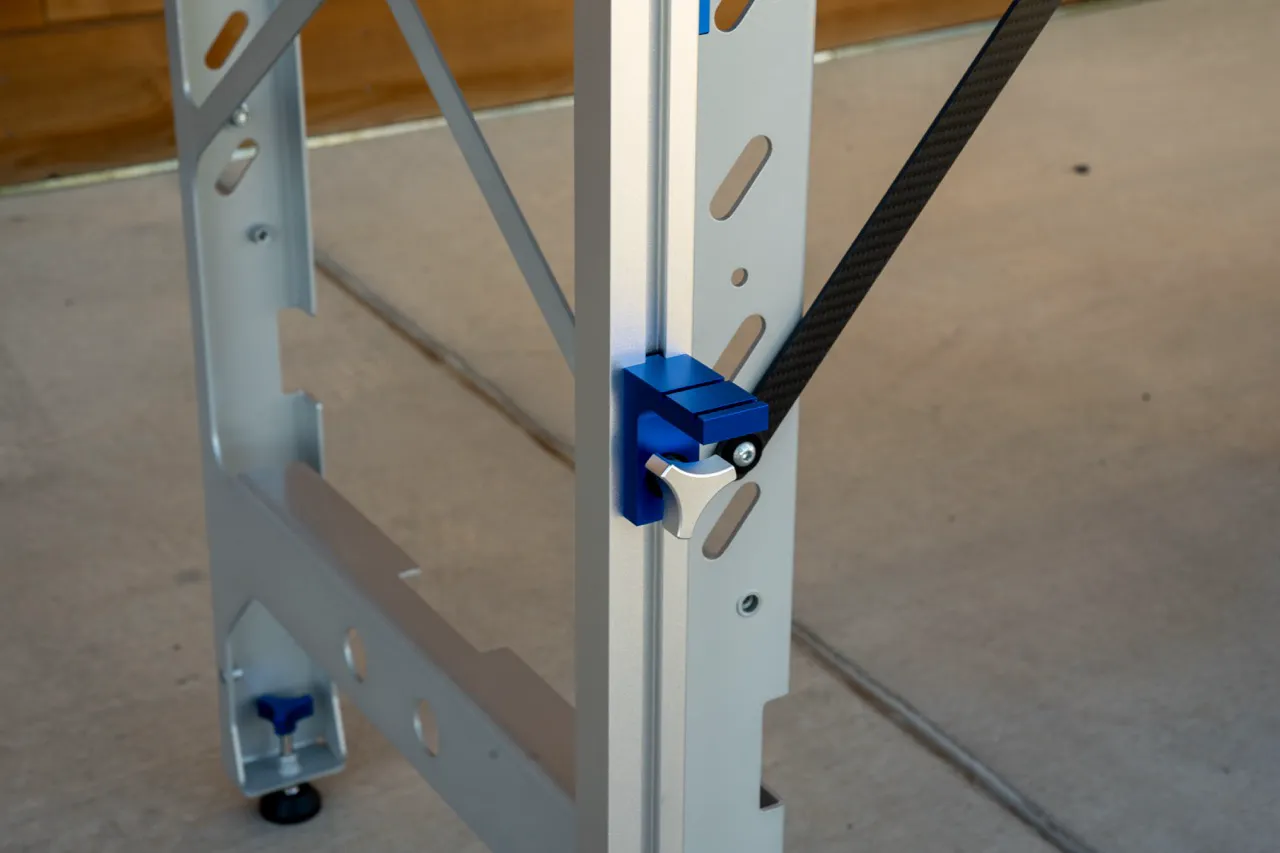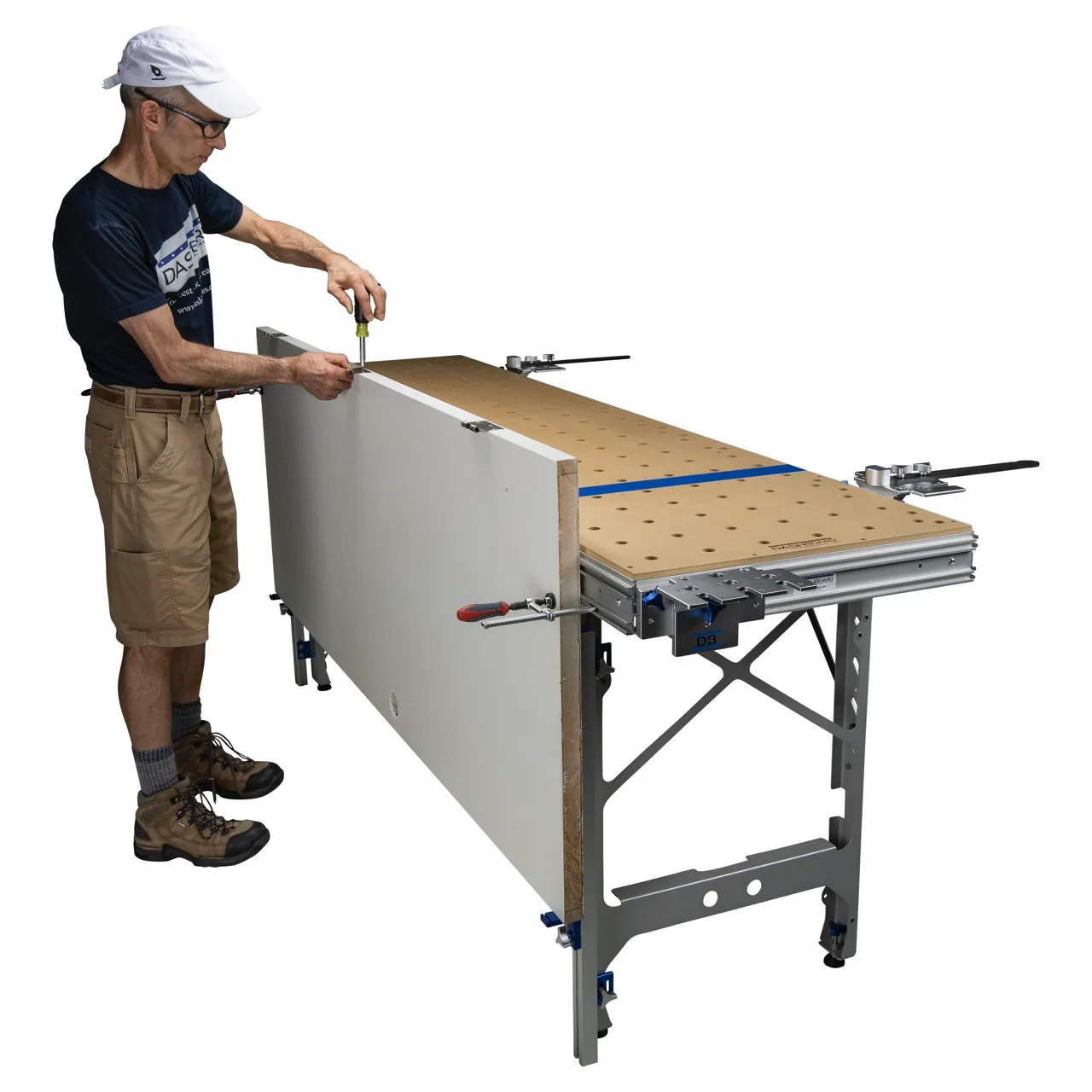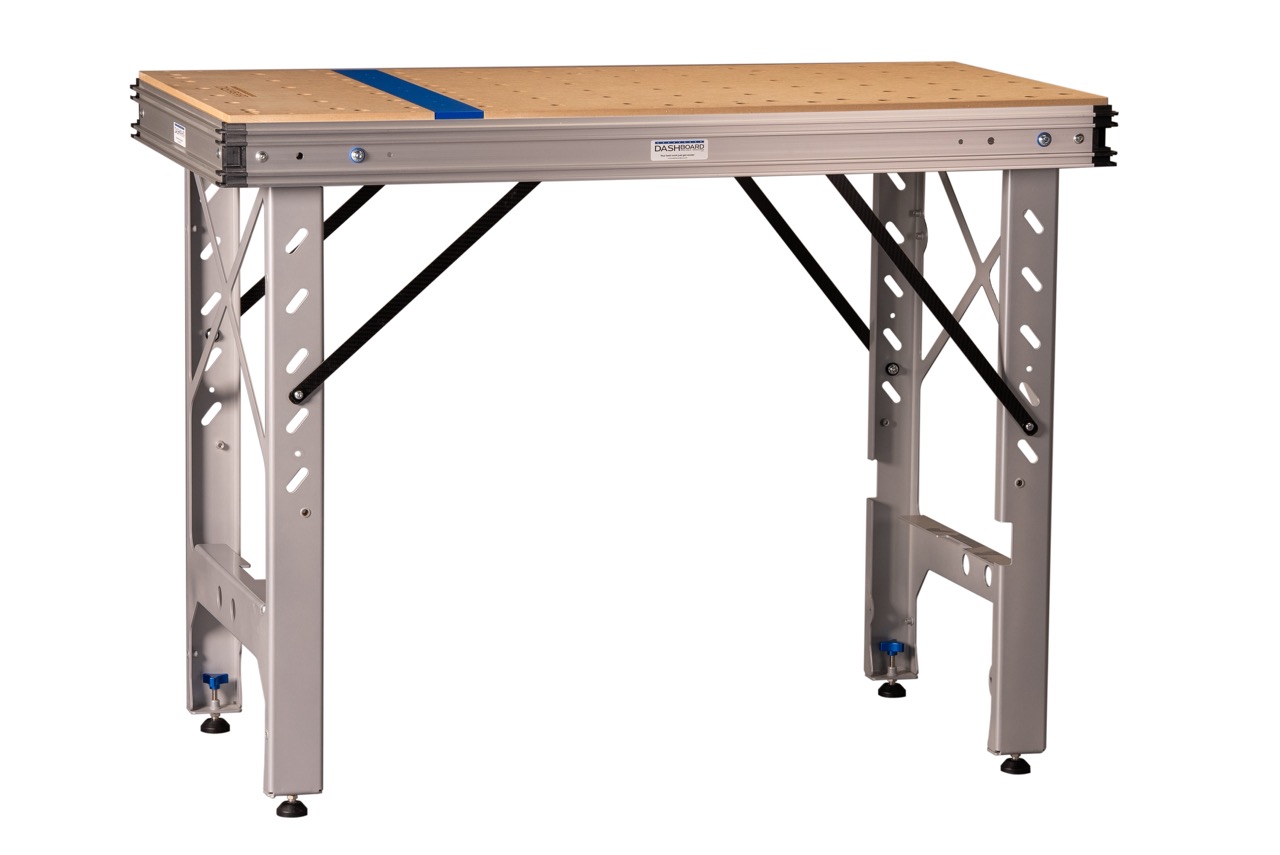TLDR Summary
Door and Panel Support Systems That Work - Quick Facts:
Door and panel support systems are specialized woodworking tools that hold doors and panels securely during construction, reducing physical strain. These systems prevent the 23% of door damage that occurs during handling/finishing and transform 2-person tasks into single-operator, precision work.
Key Technical Specifications:
- Adjustable platforms: 3-31.5" height range, infinitely adjustable
- Load capacity: 200 lbs static weight
- Cost range: $150-500 (ROI in 60-90 days for 10+ doors/month)
Problem Solved: Relieves ergonomic strain by positioning doors at comfortable working height, eliminates $2,400 average material loss from improper support, reduces setup time from 15 to 1 minutes per door.
Best For: Cabinet shops, restoration work, finish carpentry involving hanging multiple doors and mortising for hinges, and anyone handling doors.
Critical Features: Anti-tip design, integration with existing workbenches, T-track clamping to hold doors securely.
Bottom Line: Proper door support systems increase workshop efficiency by 40%, prevent 95% of handling damage, and pay for themselves within 2-3 months of regular use.
___________________
When you're wrestling with a 48-inch solid mahogany door that weighs 85 pounds, the difference between a successful installation and a damaged workpiece often comes down to one thing: proper support.
Door and panel support systems transform heavy, awkward workpieces from a two-person struggle into precise, single-operator tasks.
These systems reduce physical strain while increasing accuracy - critical when you're working with expensive materials where a single mistake can cost $300 or more.
The Real Cost of Inadequate Support
Last month, a cabinet shop in Denver reported losing $2,400 worth of custom doors due to flexing during the finishing process.
The doors, each measuring 36" x 84", developed a 3/8" bow because they were propped against sawhorses during staining. This isn't uncommon—industry data shows that 23% of door damage occurs during handling and finishing, not during initial construction.
Professional woodworkers know that doors present unique challenges:
- Weight distribution changes as you work on different sections
- Vertical operations require constant repositioning without proper supports
- Standard workbenches offer no solution for edge work or hardware installation
- Material costs make mistakes expensive
How Modern Support Systems Actually Work
Door and panel support systems aren't just glorified sawhorses.
The most effective designs incorporate three critical elements that standard setups miss:
Infinitely adjustable platforms that allow you to position work at the exact height needed—typically between 24" and 42" for most operations. This eliminates the back strain that comes from bending over low surfaces or reaching up to elevated work.
Integrated clamp tracks hold panels and doors so you work more accurately.
The Dash-Board Door & Panel Supports, for example, transform a standard workbench into what we call a "21st-century door bench," with two adjustable platforms designed specifically for handling doors and vertical workpieces. These systems typically support static loads up to 300 pounds while maintaining stability during routing, sanding, or hardware installation.
Frame-and-Panel Construction: Why Support Matters More Than Ever
Frame-and-panel construction is a fundamental technique in woodworking, commonly used for doors. This method involves creating a frame with rails and stiles, into which a panel is inserted, typically not glued to allow for wood movement.
Modern frame-and-panel doors have evolved beyond simple flat panels—raised panels, glass inserts, and mixed-media designs require more precise support during assembly.
The critical moments requiring proper support include:
- Initial glue-up: Rails and stiles must remain perfectly square while accommodating a floating panel
- Profile routing: Any movement during edge profiling creates visible inconsistencies
- Hardware installation: Hinge mortises require accuracy within 1/64" for proper operation
Solving the Flex Problem in Large Doors

The LumberJocks forum discusses bracing to prevent flexing, suggesting torsion box designs with skins and internal supports for stiffness. However, external support systems offer a more versatile solution.
Here's what actually works:
For doors 36-48 inches wide: Position supports at 16-inch intervals, creating three contact points minimum. This reduces center deflection to less than 1/16" under normal working conditions.
For doors over 48 inches: Add a center support beam that runs perpendicular to the grain direction. Combined with adjustable platforms at each corner, this setup handles doors up to 96 inches without measurable flex.
Material considerations: Solid wood doors require different support configurations than engineered products. A 42" solid cherry door needs support every 14 inches, while the same size in MDF can span 20 inches between supports.
Integration with Existing Workshop Setups
The most effective door support systems integrate with your current workbench rather than requiring dedicated floor space.
Dashboard PWS's Door and Panel Supports are designed exclusively for their Dash-Board and ShortCut workbenches, priced at $199.00 for a set of two adjustable platforms.
Key integration features that matter:
- Height matching: Supports should align with your primary work surface ±1/4"
- Footprint: Effective systems fit within a 24" x 48" space when not in use
- Tool compatibility: T-tracks or dog holes at 96mm centers accommodate standard accessories
Safety Specifications That Actually Prevent Injuries
OSHA data shows that 31% of workshop injuries involve material handling.
Proper support systems address the primary risk factors:
Load ratings must exceed working weight by 100%. A system rated for 300 pounds static load safely handles 150-pound doors with dynamic forces from tool operation.
Anti-tip design requires a base footprint at least 60% of the maximum supported height. A 42" high support needs a 25" minimum base width.
Surface protection prevents both workpiece damage and slippage. Rubber pads with 40-50 durometer rating provide grip without marring finishes.
Pinch point elimination through rounded edges and enclosed adjustment mechanisms reduces hand injuries by 85% compared to traditional sawhorses.
The Path Forward
Door and panel support systems represent a fundamental shift in how we approach large workpiece handling. The days of balancing doors on makeshift supports while hoping nothing shifts are over. Modern systems provide the stability, adjustability, and safety that match the precision of today's tools and the value of today's materials.
Whether you're building your first raised-panel door or processing dozens weekly, the right support system transforms a challenging task into a controlled, repeatable process.
The question isn't whether you need proper door supports—it's which system matches your specific workflow and workshop constraints.
Start by evaluating your most common door sizes and operations. Then match support capabilities to those requirements, ensuring 25% extra capacity for future projects. The investment in proper support pays dividends in quality, efficiency, and professional satisfaction with every door that leaves your shop.
FAQs on Door & Panel Support Systems
What's the biggest door these can hold?
Most systems safely hold doors up to 8 feet tall and 200 pounds. For a standard 3-foot door, place supports every 16 inches. Bigger doors need extra support in the middle to stop them from bending.
Will they work with my workbench?
Most will, but check that they match your bench height and have the right mounting system (like T-tracks or bench dog holes). Some, like Dashboard PWS supports, only work with specific benches, so verify compatibility before buying.
How much weight should they handle?
Pick supports rated for twice your door weight. If your door weighs 150 pounds, get supports rated for 300+ pounds. This extra strength keeps things safe when you're routing or sanding.
Can I use these for cabinet doors too?
Yes! They're great for cabinet doors. The height adjusts from 3” to 31.5”, perfect for both big entry doors and small cabinet doors. One woodworker told us he would never go back to the old door bucks.









.jpeg)
.webp)
